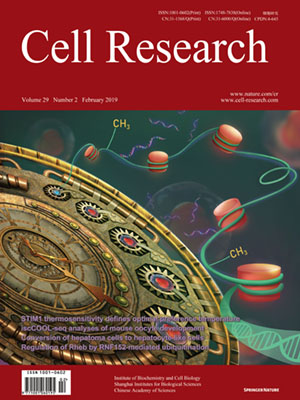
Advanced Search
Submit Manuscript
Advanced Search
Submit Manuscript
Volume 29, No 2, Feb 2019
ISSN: 1001-0602
EISSN: 1748-7838 2018
impact factor 17.848*
(Clarivate Analytics, 2019)
Volume 29 Issue 2, February 2019: 174-176
Jianan Li 1,2,3, Zhen Liu 4, Shisheng Huang 1,2,3, Xiao Wang 1,2,3, Guanglei Li 1,5, Yuting Xu 4, Wenxia Yu 1,2,3, Shanshan Chen 4, Yu Zhang 1, Hanhui Ma 1, Zunfu Ke 6, Jia Chen 1,7, Qiang Sun 4 and Xingxu Huang 1,7
1 School of Life Science and Technology, ShanghaiTech University, 201210 Shanghai, China; 2 Shanghai Institute of Biochemistry and Cell Biology, Chinese Academy of Sciences, 200031 Shanghai, China; 3 University of Chinese Academy of Sciences, 100049 Beijing, China;4Institute of Neuroscience, Chinese Academy of Sciences (CAS) Key Laboratory of Primate Neurobiology, CAS Center for Excellence in Brain Science and Intelligence Technology, Chinese Academy of Sciences, 200031 Shanghai, China; 5 International Academy of Optoelectronics at Zhaoqing, South China Normal University, 526060 Guangdong, China; 6 Department of Pathology, The First Affiliated Hospital, Sun Yat-Sen University, Guangzhou, 510080 Guangdong, China and 7 CAS Center for Excellence in Molecular Cell Science, Shanghai Institute of Biochemistry and Cell Biology, Chinese Academy of Sciences, 200031 Shanghai, China
https://doi.org/10.1038/s41422-018-0133-4